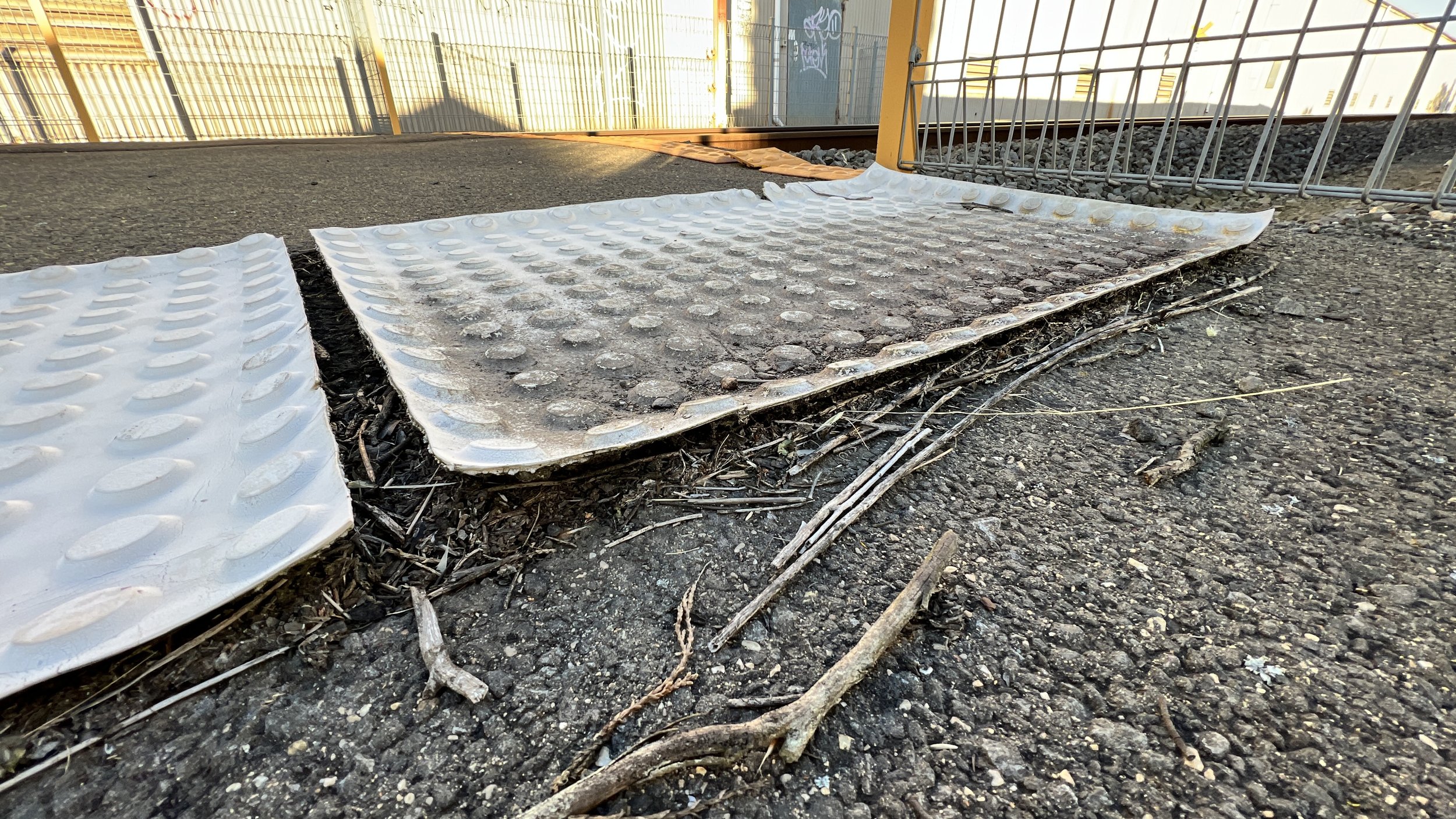TGSI tripping hazard at a Railway Track Crossing
Did l hear a train? Railway Track Crossing Safety.
Watch or Listen: 3:14 min | Images: 7 | Author: Dean Homicki | Return to Journal Menu
TGSI tripping hazard at a Railway Track Crossing
Listen
Click/Tap the audio player below to listen to the transcript of this journal post as an audible version. This is a streamed broadcast from the Staebl.academy website.
Images
Tactile Ground Surface Indicators (TGSI) are crucial for providing guidance and orientation to individuals with visual impairments, ensuring their safety as they navigate through various built environments. However, questions surrounding the durability and reliability of these essential features often arise, particularly when they become worn down or hazardous, as seen in this video journal at a Ballarat North railway track crossing in Victoria.
The Lifespan of TGSI: Factors Influencing Durability
There are several factors that impact the lifespan and effectiveness of TGSIs in the built environment. These include the materials used in manufacturing, the installation process, the application environment, and the frequency of use. Ideally, a TGSI should remain fit for purpose for as long as possible, but determining the exact lifespan can be challenging.
Material Selection:
The choice of material is a critical aspect of TGSI performance. Materials should be robust, weather-resistant, and able to withstand the wear and tear of daily use. Some common materials used in TGSIs include stainless steel, polyurethane, and concrete. The selection of appropriate materials can significantly impact the TGSI's longevity and overall performance.
Installation and Maintenance:
Proper installation and maintenance of TGSIs are vital for ensuring their functionality and safety. Poor installation may result in uneven surfaces or detachment, while lack of maintenance can cause debris buildup, rendering the indicators ineffective. Regular inspection and maintenance can help prolong the lifespan of TGSIs and prevent them from becoming hazardous.
Environmental Factors:
The application environment is another significant factor that can affect the durability of TGSIs. Railway track crossings, for example, are exposed to various environmental factors such as heavy foot traffic, rain, and fluctuating temperatures. These factors can cause TGSIs to degrade more quickly, impacting their performance and safety.
Determining Performance and Accountability
Given the various factors that can influence the lifespan of TGSIs, it is essential to establish guidelines and standards for determining their performance. Regular inspection and assessment can help identify any signs of wear, damage, or degradation, ensuring that TGSIs remain safe and functional.
In addition to setting guidelines, it is crucial to assign responsibility for the monitoring and maintenance of TGSIs. This responsibility could fall on local authorities, transportation agencies, or property owners, depending on the specific context.
Conclusion:
The safety and reliability of Tactile Ground Surface Indicators are of utmost importance in ensuring the well-being of visually impaired individuals. By selecting appropriate materials, ensuring proper installation and maintenance, and assigning responsibility for monitoring and upkeep, we can work to guarantee that these critical features remain fit for purpose and hazard-free in the built environment.
__
Location: Ballarat North, Victoria
__
Dean Homicki from Stæbl Academy.
Mobility Access Compliance in Minutes. Click the ‘Try it Now’ button below. Do it.
Be the first to know. Join with the Stæbl Academy and never miss a Journal Post.









